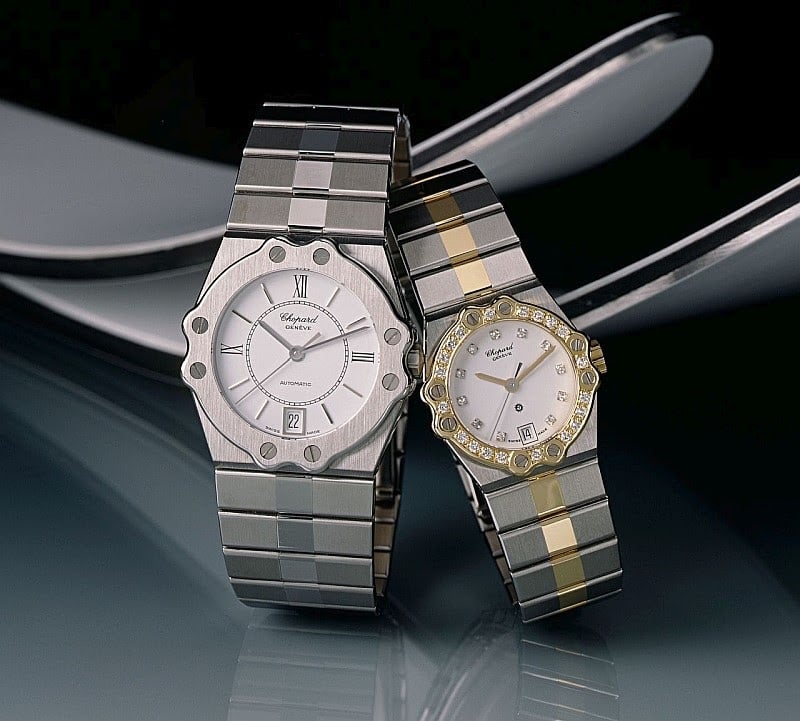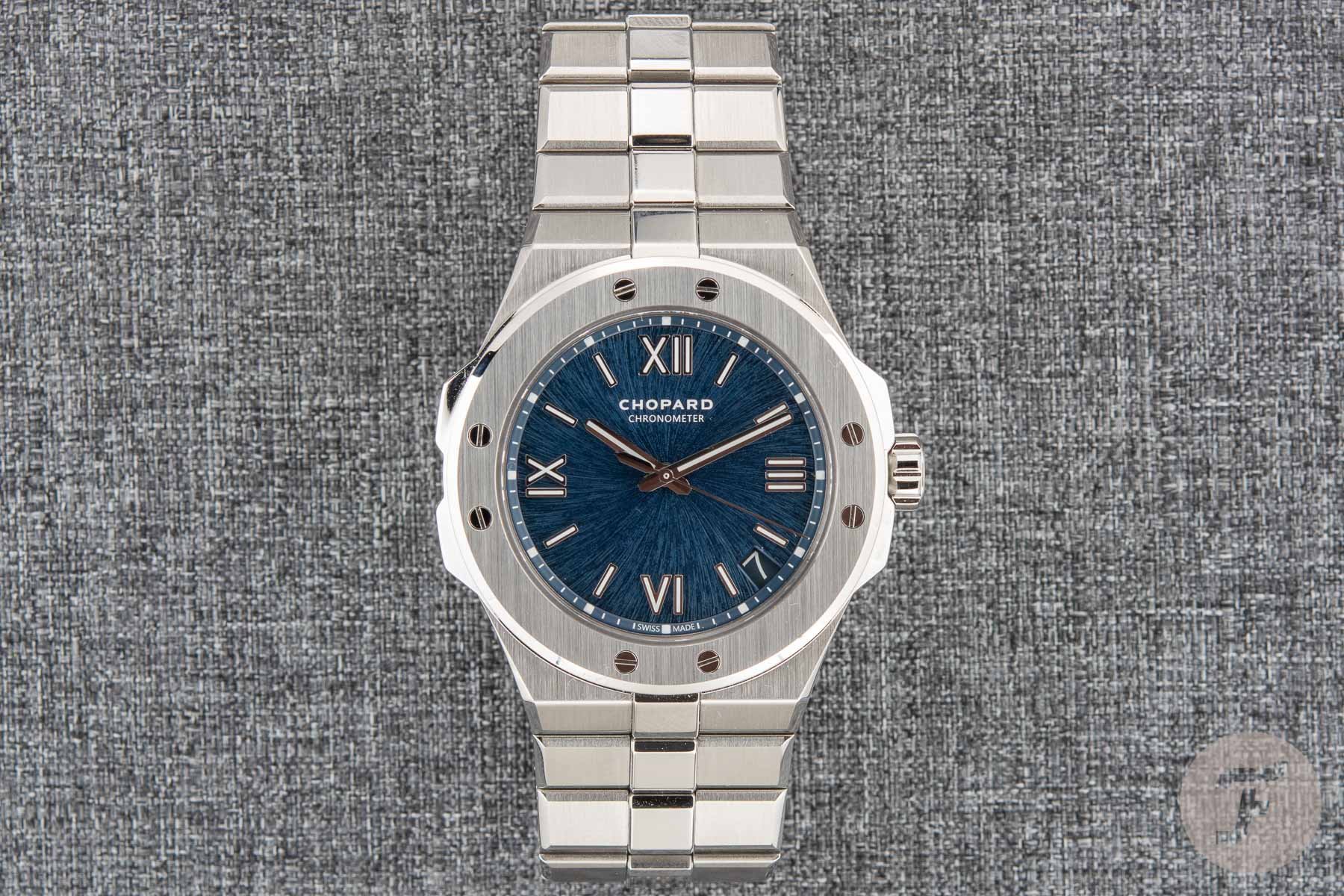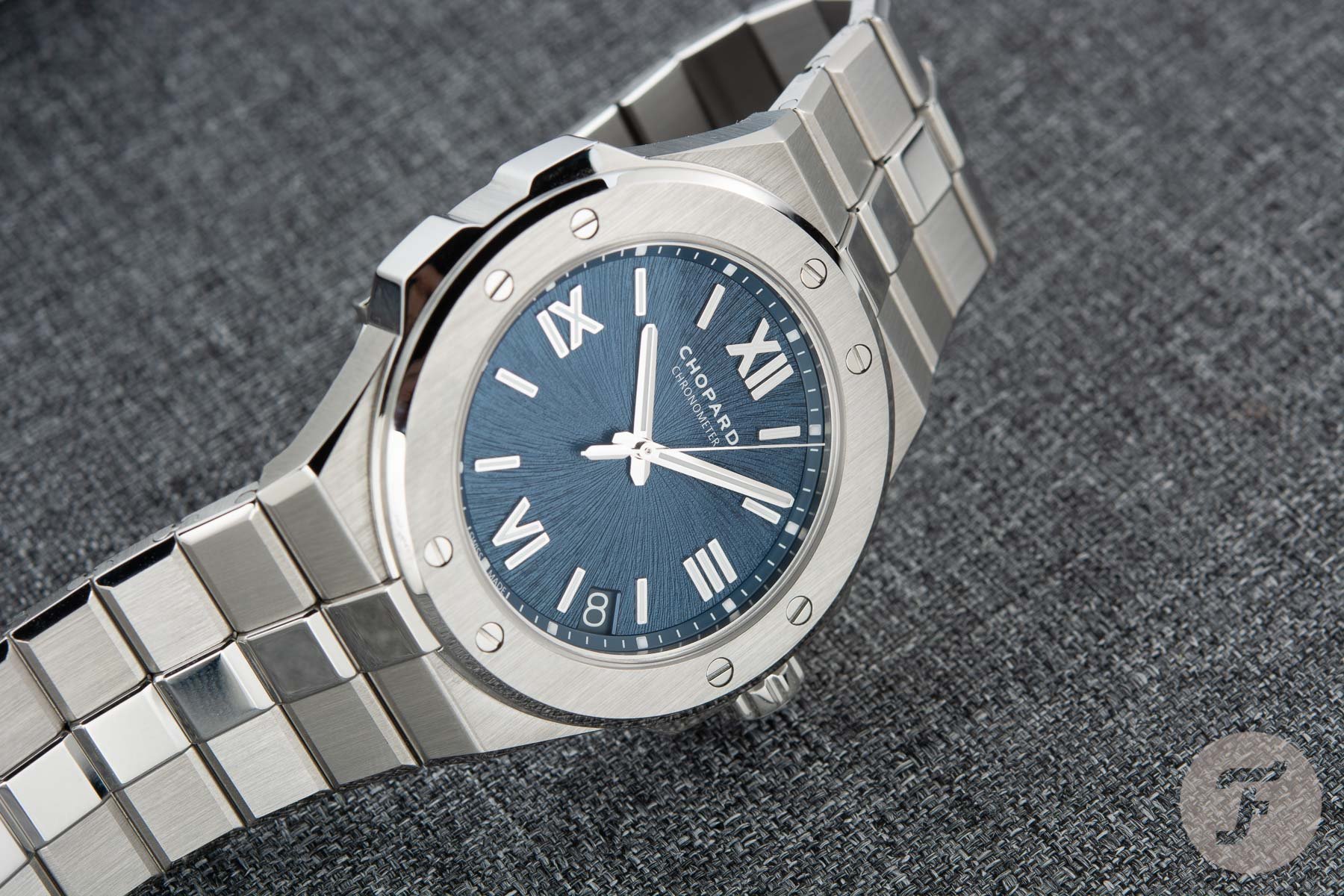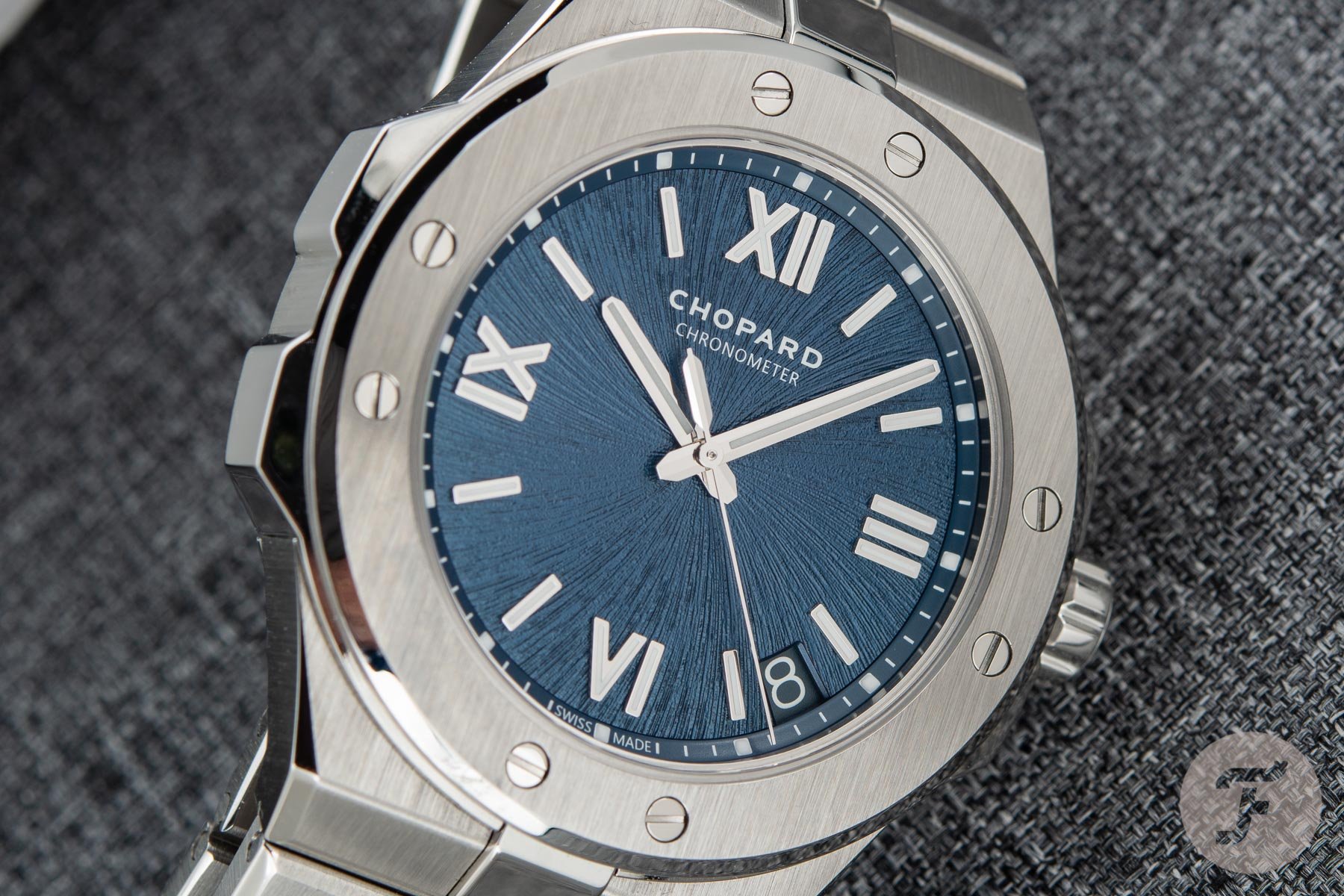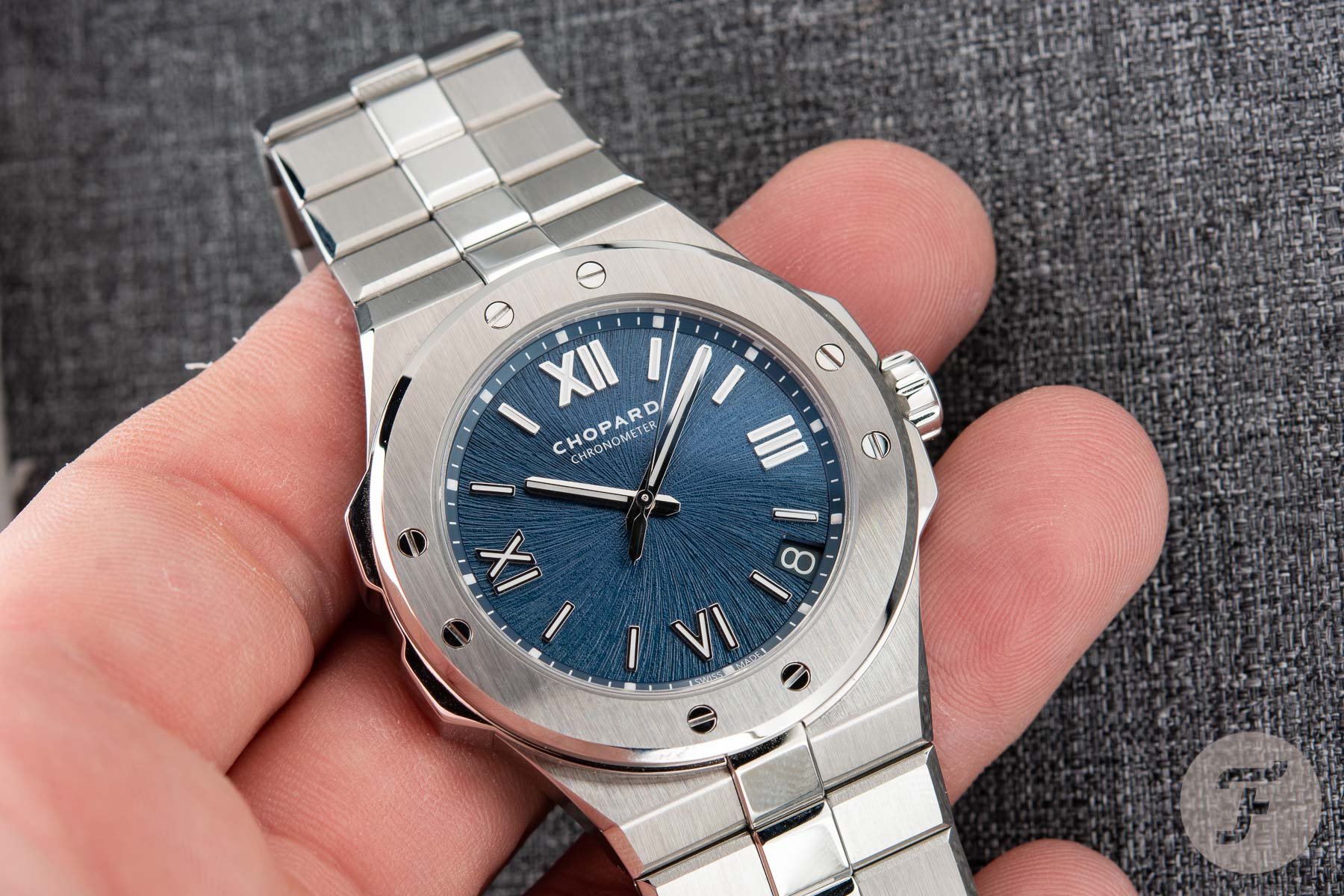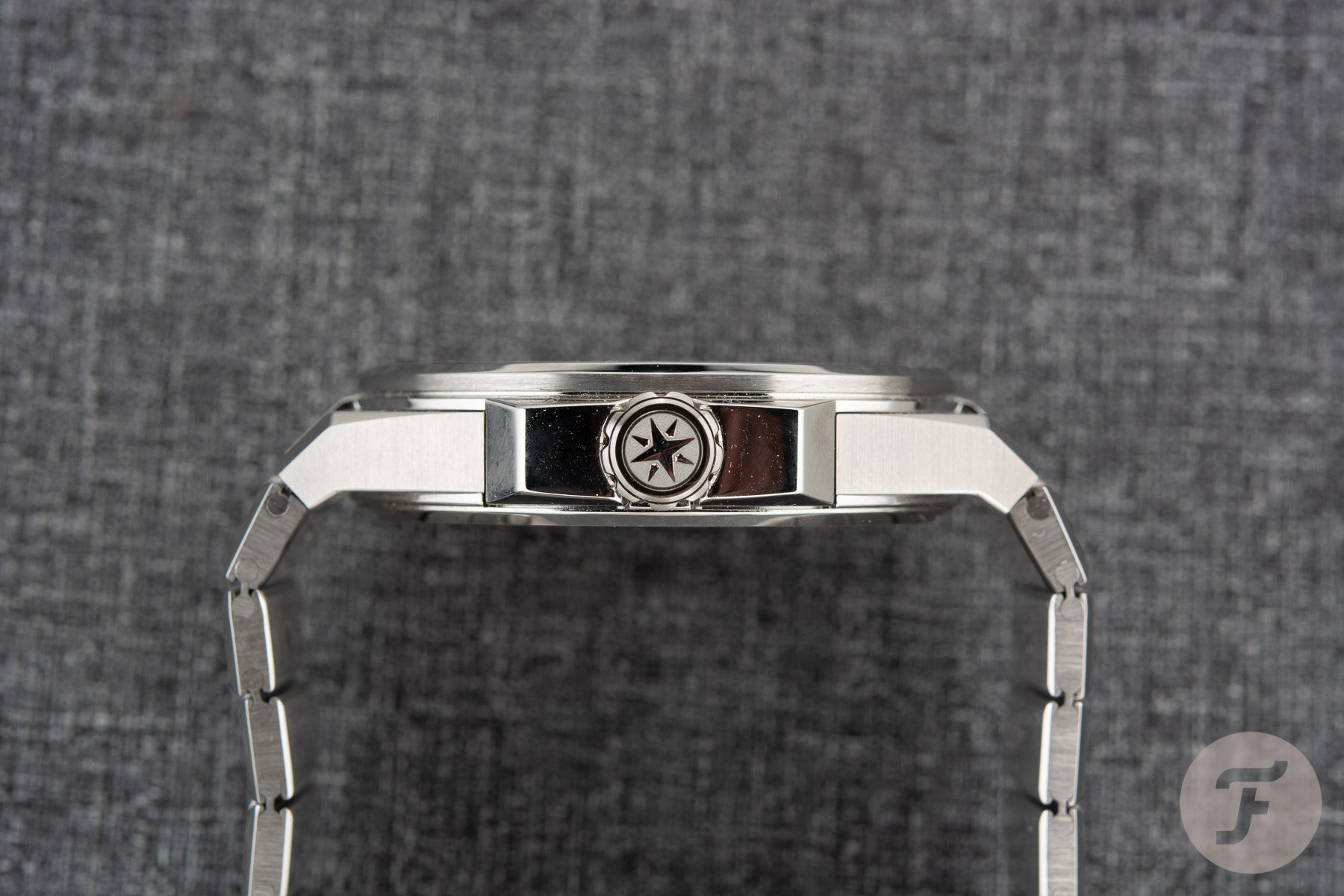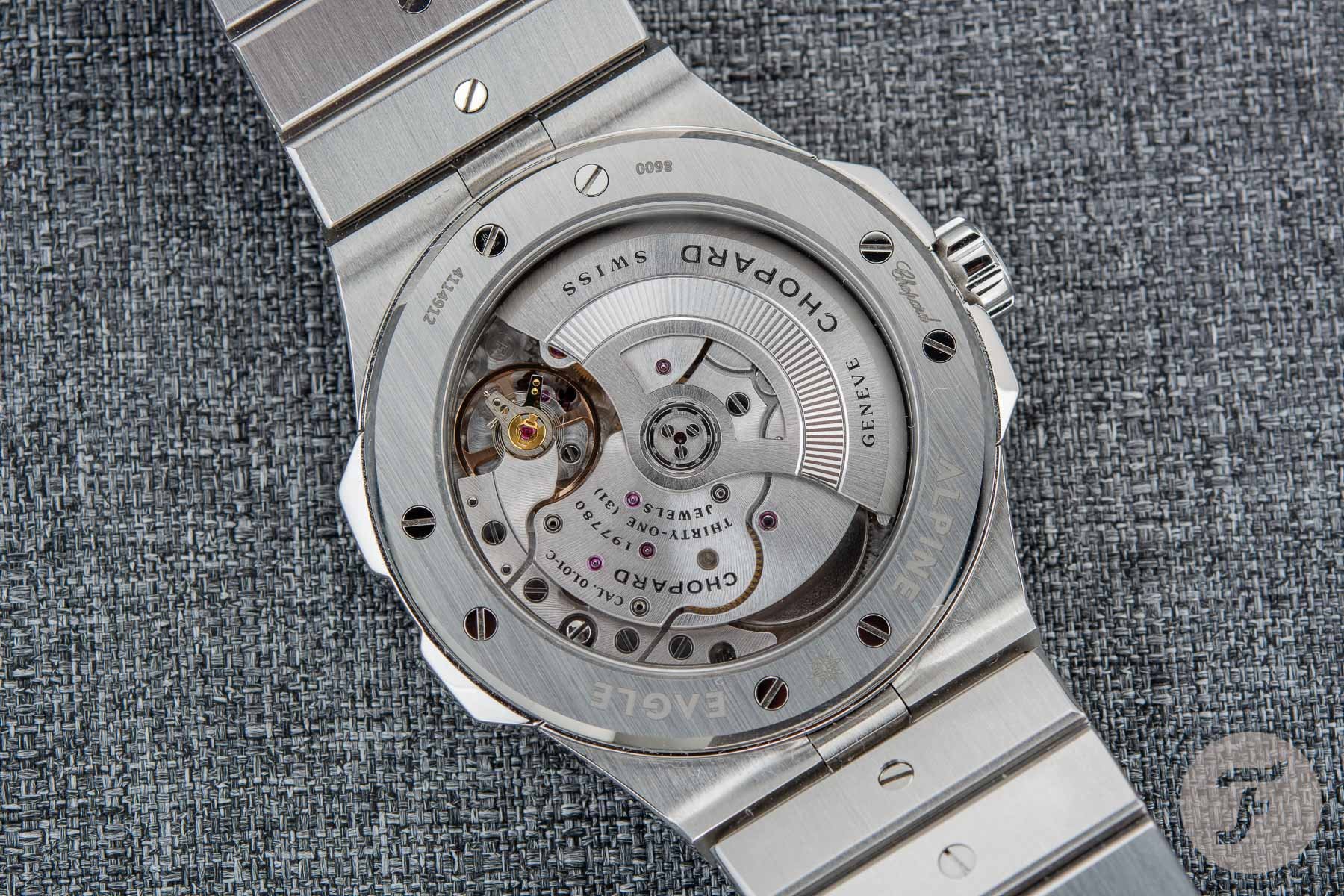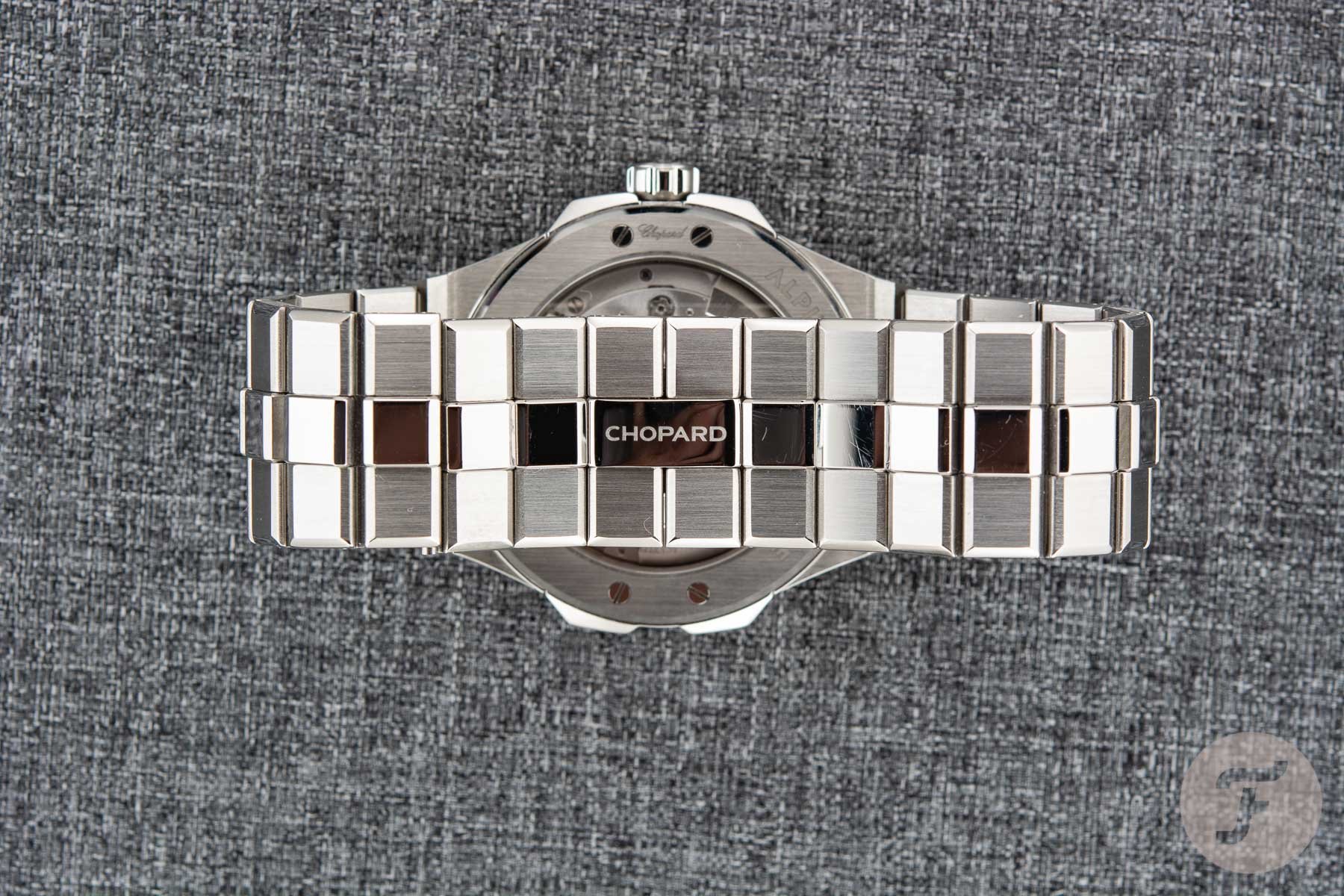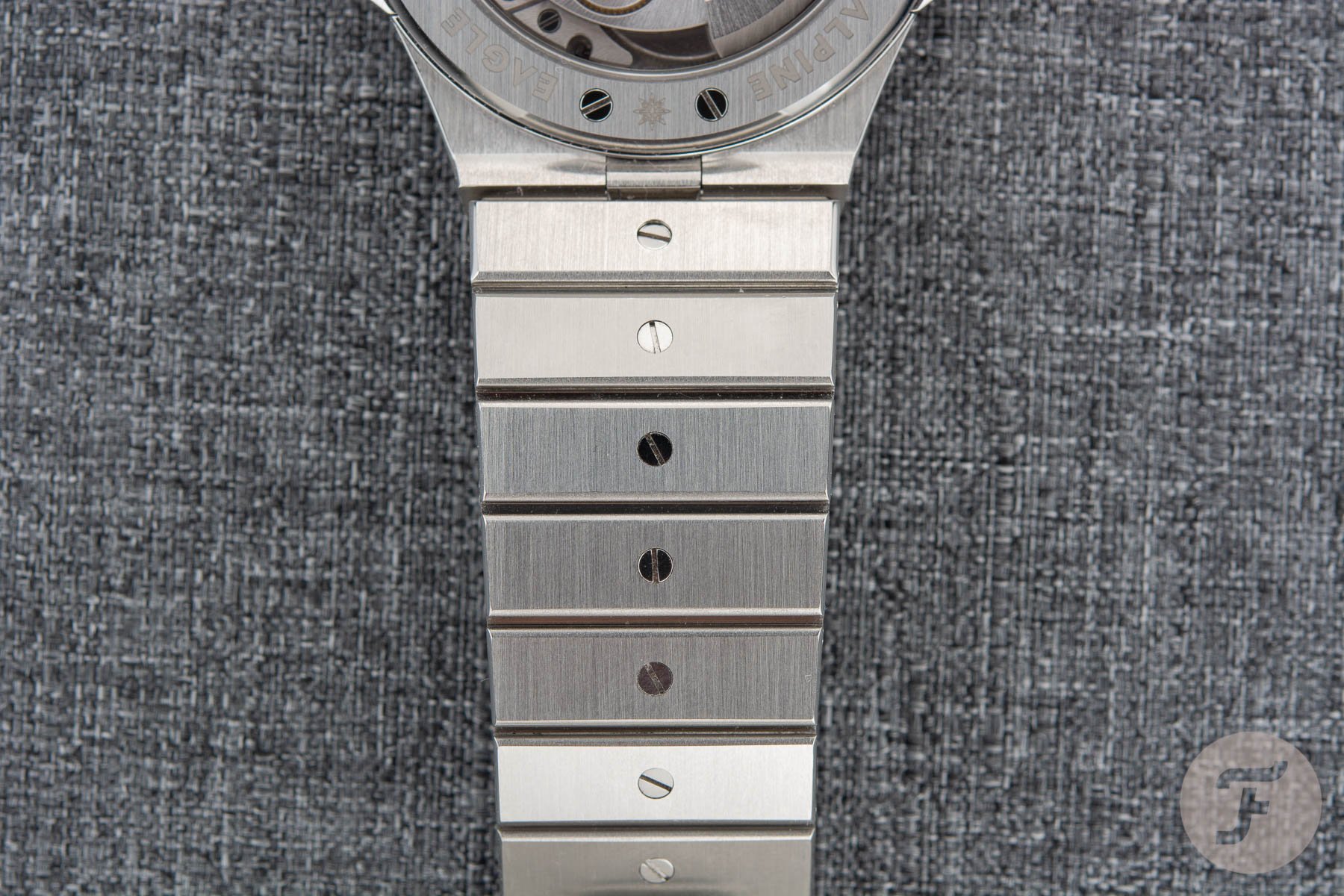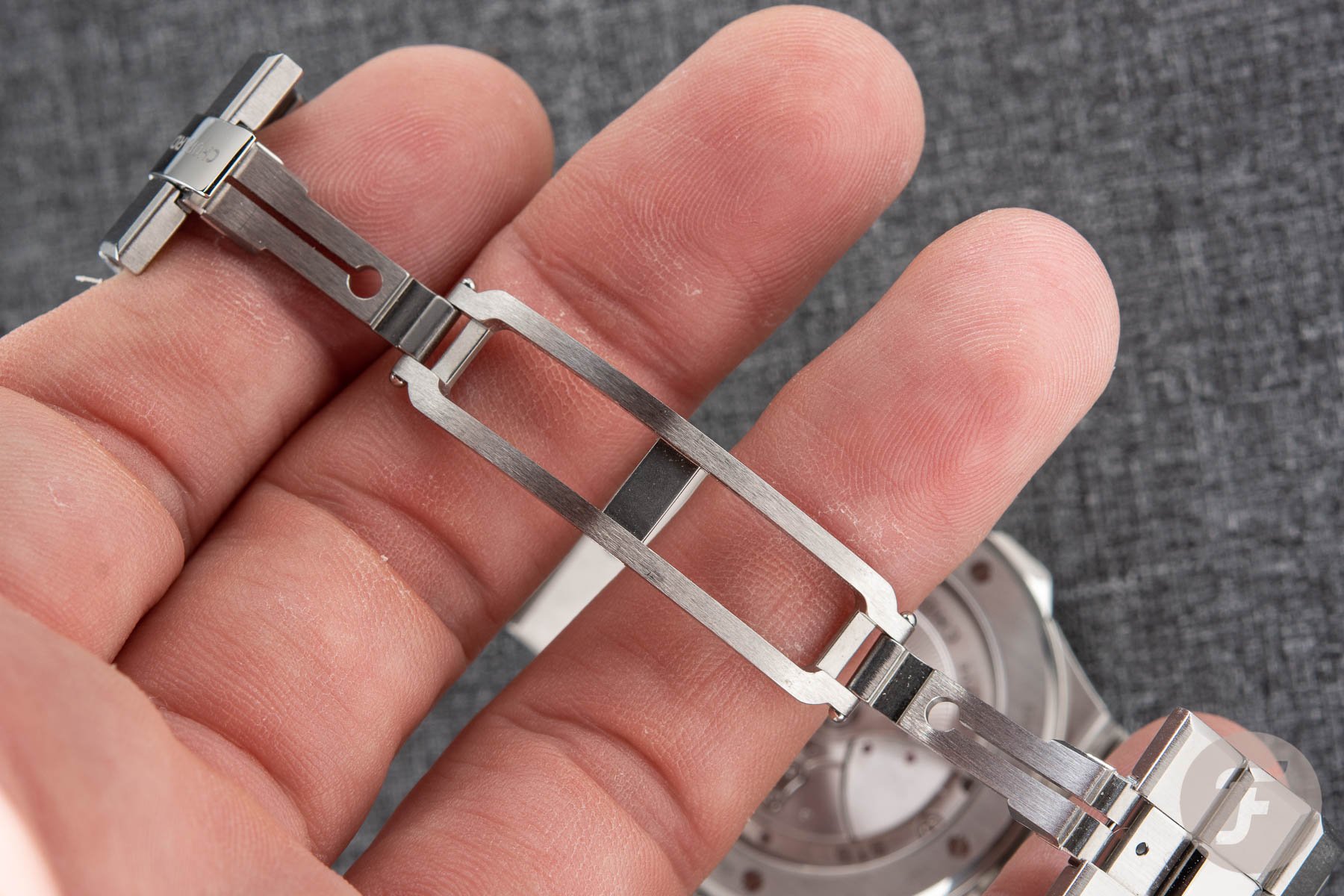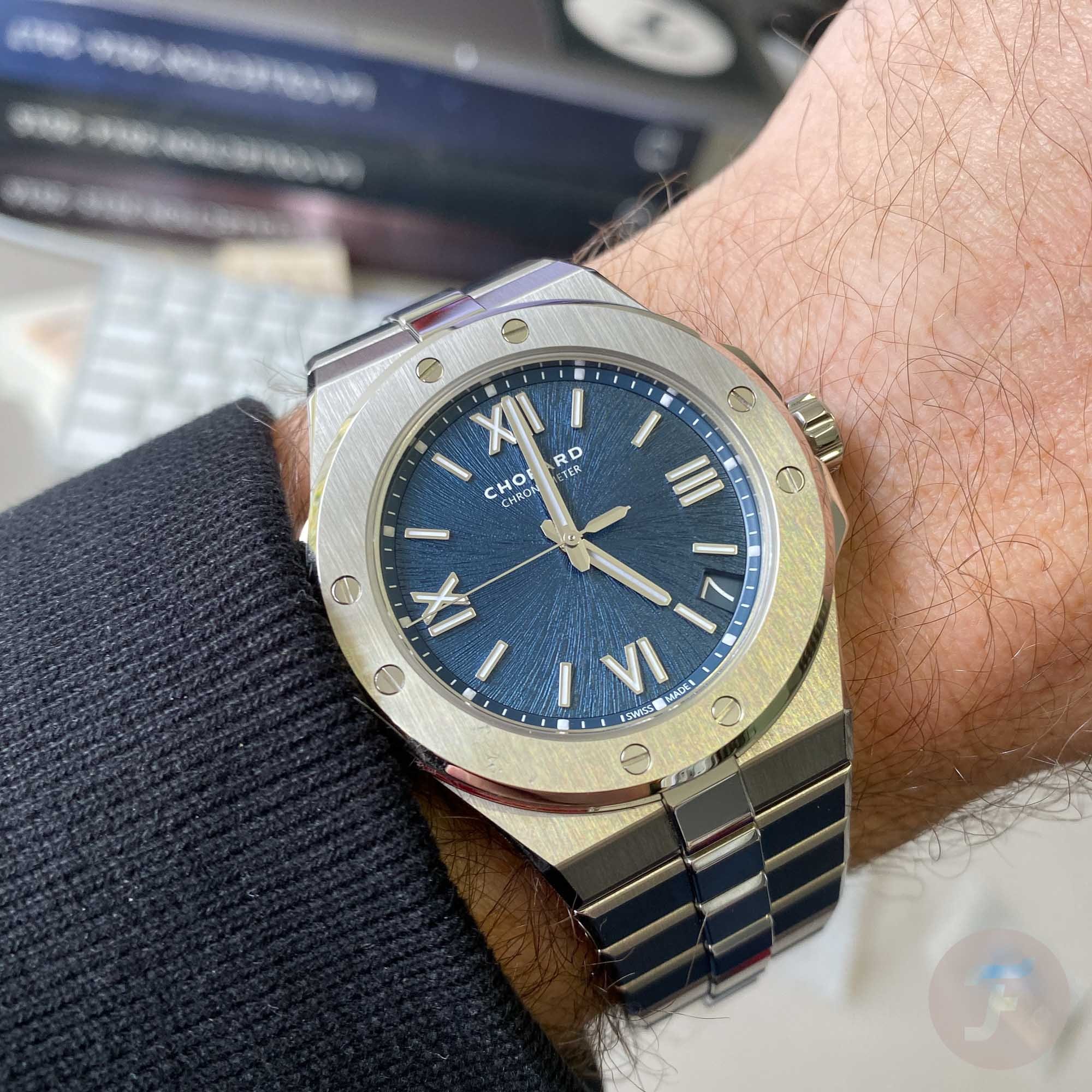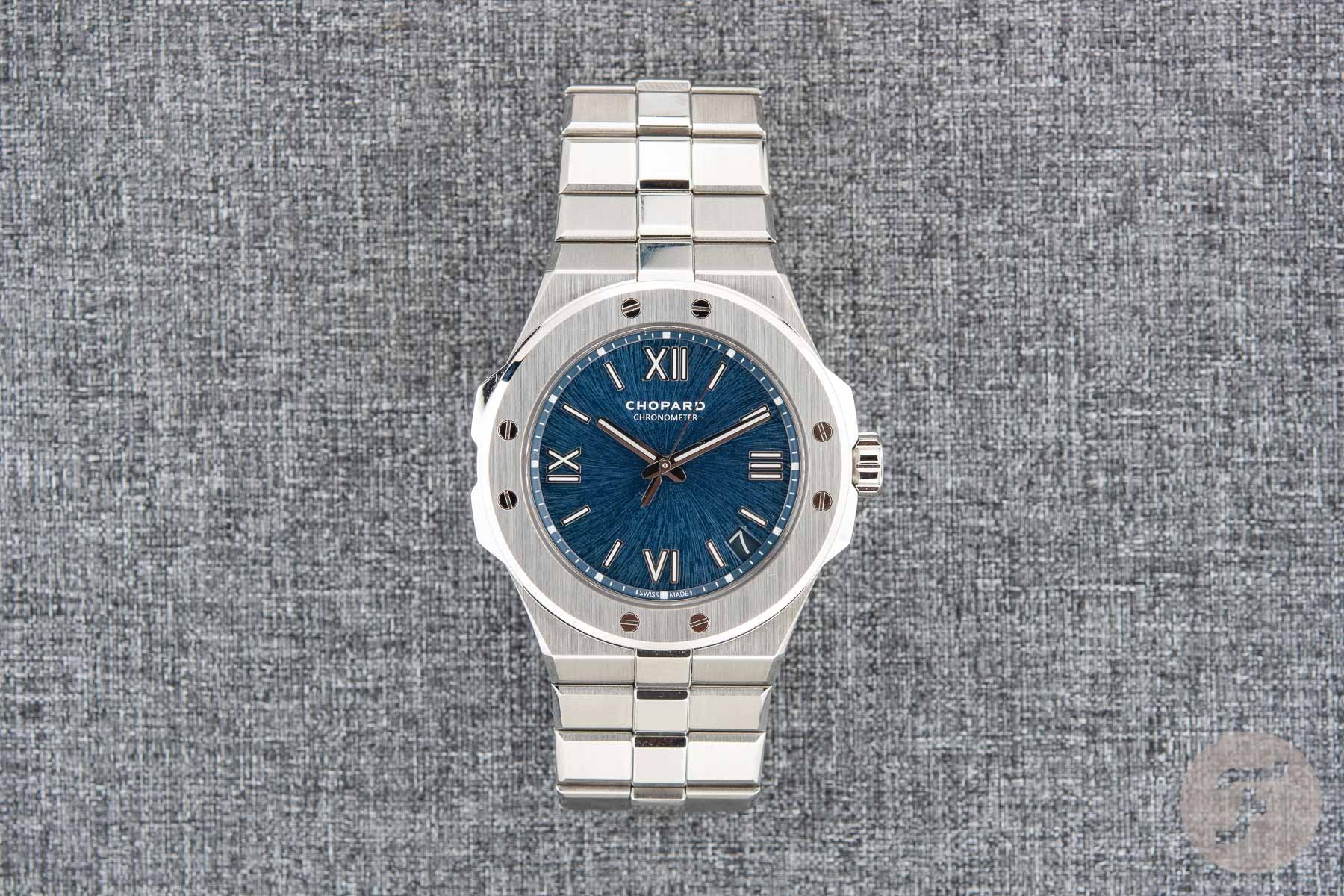Chopard Alpine Eagle – 52Mondayz, week #2-2020
Last October, Chopard introduced their Alpine Eagle, a new watch with a familiar face. We decided to use our hands-on experience with the Chopard Alpine Eagle for an episode of our 52Mondayz feature.
To be honest, I was a bit surprised to see the return of Chopard’s 1980s model called St. Moritz. The Chopard St. Moritz was a watch designed by the then 22-year old Karl-Friedrich Scheufele, now CEO of Chopard. A sporty luxury watch aimed at a new type of clientele at the time, young and successful men and women who enjoyed a somewhat jet set-ish lifestyle. A bit like how St. Moritz is, a luxury alpine resort town which was (in 2014) the second most expensive place in the world for tourist and business accommodation. There you go.
I was too young to witness all that, but I have fond memories of the 1980s and love a lot of things that were designed in that decade (including my wife). To many, the 1980s is not the best example of good taste, probably, but I have a slightly different opinion, perhaps also driven by nostalgia. Music, cars, watches, I happen to like a lot of things that were released in the 1980s. I have fond memories of the Mercedes-Benz 190 that found its way to some of our neighbors, and of course, the BMW 3-series (E30) of that time. I would still drive one of those if I had the means and space.
The trend of luxury sports watches that started in the 1970s with designs of Gérald Genta and Jorg Hysek also continued in the 1980s. Ebel had their 1911, Omega introduced the ‘Manhattan’ Constellation, and Audemars Piguet continued to develop their Royal Oak collection (in smaller diameters). And Karl-Friedrich Scheufele came up with the Chopard St. Moritz in 1980. This watch was produced for quite some years, but then somewhere early 2000s, it came to an end. I don’t see many of them in the flesh, but perhaps they didn’t find their way to The Netherlands, where we tend to have this Calvinist nature.
But fast forward 2019 and Chopard thought it was time to bring back one of their iconic luxury sports watches from the 1980s. One of the first questions I asked myself when seeing the press release is why they didn’t call this one St. Moritz. Apparently, the name wasn’t free to use, as St. Moritz connected to another watch brand (or group, in this case). Scheufele, or Chopard, decided to use the name Alpine Eagle instead. According to that same press release, Chopard uses the introduction of this watch to reveal its new commitment to protecting the Alpine environment through the launch of the Eagle Wings Foundation – of which Karl-Friedrich Scheufele is a founding member.
The son of Karl-Friedrich Scheufele, Karl-Fritz, insisted on the re-introduction of this watch. And I can imagine he did, as he is probably on top of things that are happening and discussed on social media and online magazines and blogs. The sports watches from Audemars Piguet, Patek Philippe, and Vacheron Constantin are often discussed (and praised) and the demand for those results in (annoying) waitlists. It is the kind of demand you want to have, as a brand, and Piaget stepped in this game a few years ago already with their Polo S collection. Perhaps a bit too early. IWC for example, stepped out with their Genta based Ingenieur collection (going all the way back to their 1976 SL1832 reference). Perhaps also a bit too early. Anyway, Karl-Fritz Scheufele pushed hard for the return of the St. Moritz and the result, the Alpine Eagle, was sent to us a while ago so that we could have a look.
Chopard Alpine Eagle
At first sight, the dial motif stands out as well as the combination of brushed and polished finishing on the case and bracelet. The dial reminded me a bit of Grand Seiko’s artwork these days, which is a good thing. I love it when a brand pays attention to details because that’s what it is all about in the end. There are 10 different executions available of the Chopard Alpine Eagle, but this blue dial version is my favorite. According to Chopard, the dial’s sunburst motif has been inspired by the iris of an eagle. I am not sure if I see the resemblance, but now you know where the idea came from.
Dial and Hands
The hour markers are a combination of sticks and Roman numerals, and all have been applied to the dial. The hour markers, but also the hands, have been applied with Super-LumiNova. The short end (or counterweight) of the seconds hand should remind you of an eagle feather. To me, the dial (including hour markers and hands) is really nicely done. It is the part of the watch that gets the most attention from its wearer, so it needs to be good. Especially in this category of watches, it even needs to be outstanding, and Chopard did just that. It also shows, but this also applies to the entire watch basically, that Chopard is a very different watchmaker than it was in 1980. Put the old St. Moritz next to an Alpine Eagle, and they are in a different world when it comes to finishing details and the movements used (more later).
Bezel and Case
The bezel lost the awkward shape(s) of the 1980s St.Moritz models, which is a good thing the 20s, I think. Chopard kept the 8 screws in the bezel of the Alpine Eagle, helping to ensure the water-resistance of the watch (100 meters). The finish on the case and bracelet is very nicely done, not shallow at all, but a proper deep brush combined with a high polish on the center links and the edges of the bezel and case. I can definitely see why some of my colleagues were raving on this new Chopard Alpine Eagle.
The steel used by Chopard for this Alpine Eagle is called Lucent Steel A223. It took Chopard 4 years to develop this new alloy, which is 50% harder than regular steel, has properties comparable to surgical steel and, also important; it has the ability to reflect light in a unique way. This is because of its homogeneous crystal structure, giving it a brilliance comparable to precious metal.
While the bezel has received a round shape, the original case shape has been maintained. On both sides, the case has this shape that perhaps looks most like a ‘crown guard’, which on the right side it is, and on the left side, it’s just the shape. When viewed from the side, you will see that these ‘bumps’ have received a polished finish. It might remind you of the Nautilus shape a bit, and some critics see this as a bad thing, but I like it.
In-house Caliber 01.01-C
With the crown, you operate the in-house developed caliber 01.01-C movement (for the 41mm that is, the smaller 36mm Alpine Eagle is powered by the smaller caliber 09.01-C movement). The power reserve is 60 hours (42 hours on the smaller version) and is chronometer-certified. It has 207 components, and a thickness of 4.95mm. This enables the Alpine Eagle to have a total thickness of just 9.7mm and admitted, it wears comfortably on the wrist. The caliber 01.01-C movement can be admired through the sapphire case back. The rotor has been nicely decorated and the movement, in general, has a nice finish. You could say that the sunburst effect on the dial also found its way on the movement plates if you look carefully.
The Bracelet
That was all easy so far, the watch has a nice finish, the dial is impressive, the movement has been developed in-house and certified as a chronometer. The part I have some issues with is the bracelet. While some of my colleague watch writers have been very enthusiastic about the bracelet, I don’t share this opinion (entirely). Admitted, the bracelet looks good. Some complain it is a bit bulky, or perhaps not as refined as the 1980s model, but I can see the sophistication in its design. The combination of brushed and polished surfaces plays a huge roll in the attraction of this bracelet. The center links are polished as well as the edges of the bracelet. The hidden clasp is beautiful, with a modest ‘Chopard’ engraving in the center.
So far, so good, I hear you. However, upon closer inspection, the bracelet construction is what I don’t like about it. The polished centerpieces aren’t links, but these are caps that hold the screw that goes into the link (see below). I wouldn’t have noticed unless one of them wasn’t properly screwed in, which caused the links to slide unwantedly. Fastening the screw solved this, of course, but it did expose the risk of losing the bracelet if one of the screws isn’t properly tightened. I want to assume that the screw in mine was just not all the way in(to the cap). Perhaps one of the persons who did a review before me tried to resize the bracelet and didn’t screw it down properly. In any case, the thin polished cap on the outside of the bracelet holds the links together, it is not some solid center link.
As you can see on the images, the bracelet of the Alpine Eagle tapers towards the clasp. The hidden clasp is a cool feature though, no large pushers sticking out, and it works perfectly. Below a close-up shot of the double folding clasp, unfolded. Chopard made sure to give it the same nice finishing as the rest of the watch.
Some Thoughts
I like the style of the Chopard Alpine Eagle, as I am a fan of the luxury sports watches in steel that were introduced in the 1970s and 1980s. I don’t mind the resemblance with the Nautilus or whatsoever, as I like those watches as well and there’s enough distinction between these watches. The watch looks good on the wrist, as you can see. Although there’s a 36mm version as well, I prefer the 41mm version on my wrist. The watch is only 9.7mm thick, so it easily goes under a sleeve or cuff. As I’ve explained to you above, the hardness of the steel is better than regular stainless steel, but I am sure the brushed finish will not spare you from showing scratches due to normal use. But, it will add character to the watch for sure.
I have shared my concerns about the bracelet, and although I might have seen and handled an exception here, it did stick with me during the time I had the Chopard Alpine Eagle. It doesn’t take away anything from its beauty though, where the dial is – for me – one of the most exciting aspects of this watch. Not many Swiss watch brands put so much detail and effort into their dials these days anymore, which I find to be a pity.
The Alpine Eagle configuration on this article is the 41mm steel version with blue dial, which will be in Chopard’s collection as reference 298600-3001. There’s also a slate grey dial version (298600-3002) and, tadaaa, a bi-color version (18k rose gold and steel) with a slate grey dial (reference 298600-6001). I really like the bi-color version as well, but this all-steel model with blue dial remains to be my favorite. The 36mm version has more variation and can be found on Chopard’s official website.
Interesting to know is that everything has been done in-house, not only the movement, but also the components in steel (and gold, for the other references) for the case and bracelet. Therefore, I am a bit surprised that Chopard only gives two years of warranty on their watches, while other brands have increased this number in recent years. Two years is, for example, mandatory by EU law anyway on these types of products. Anyway, I am sure that Chopard will follow at some point.
The 41mm Chopard Alpine Eagle reference 298600-3001 has a retail price of €12.200, including VAT.
All information can be found on Chopard’s website.

